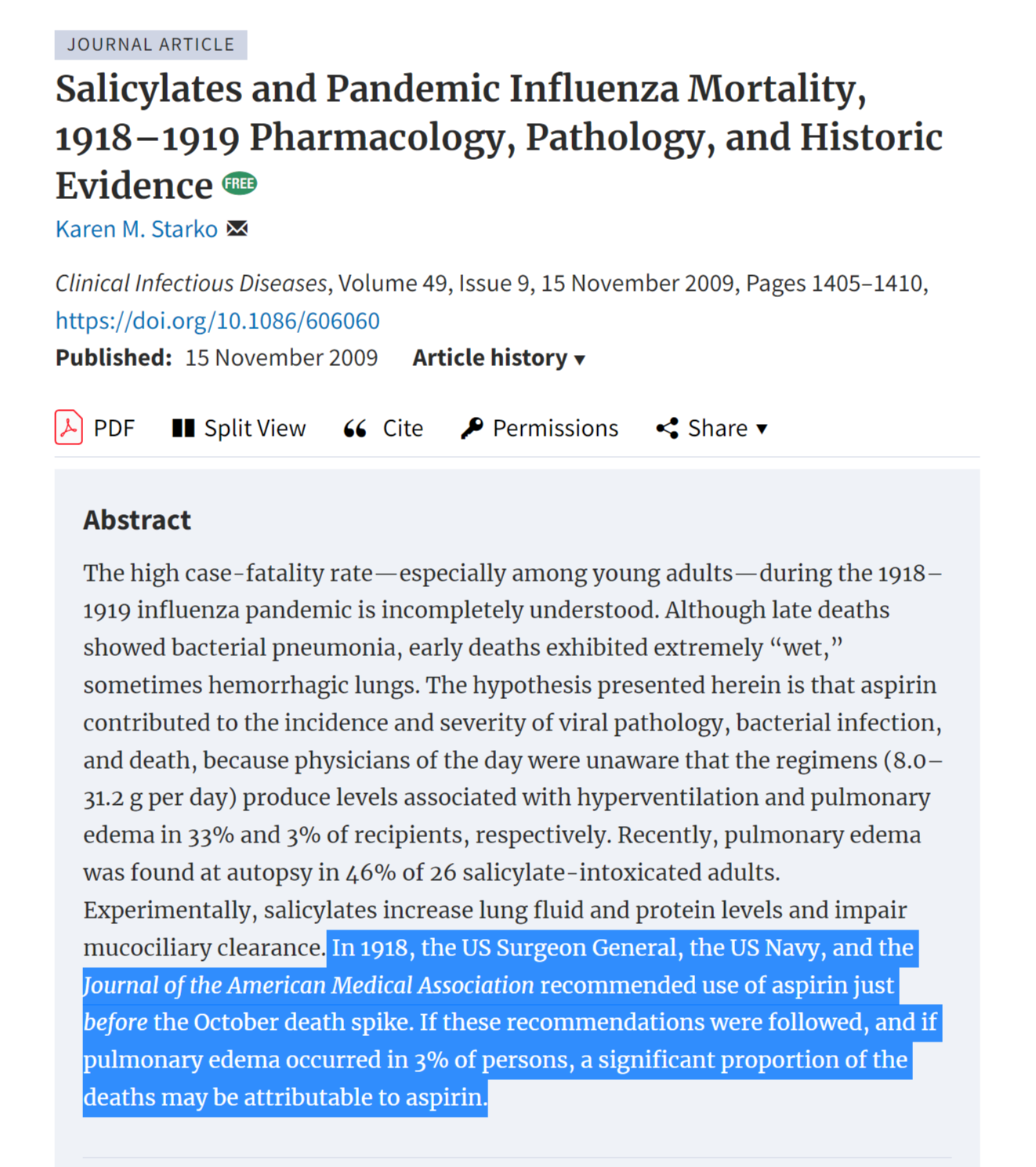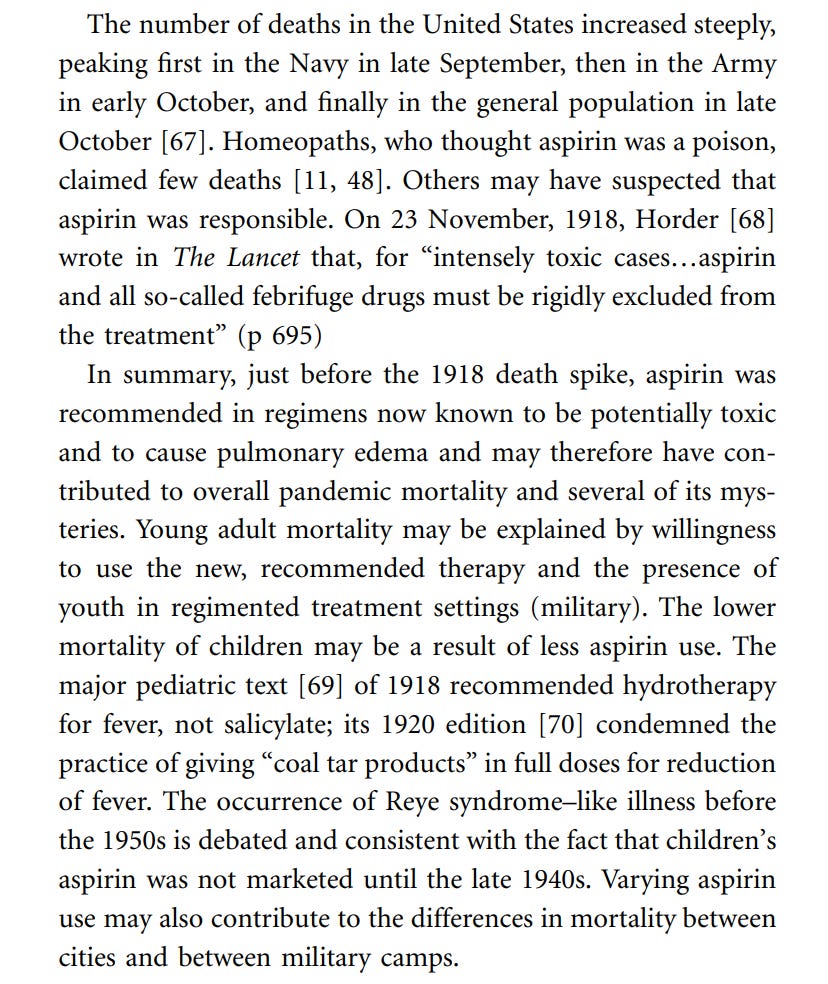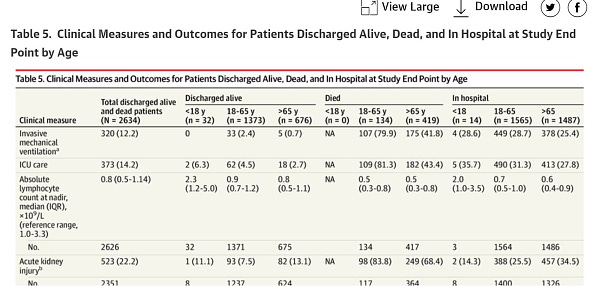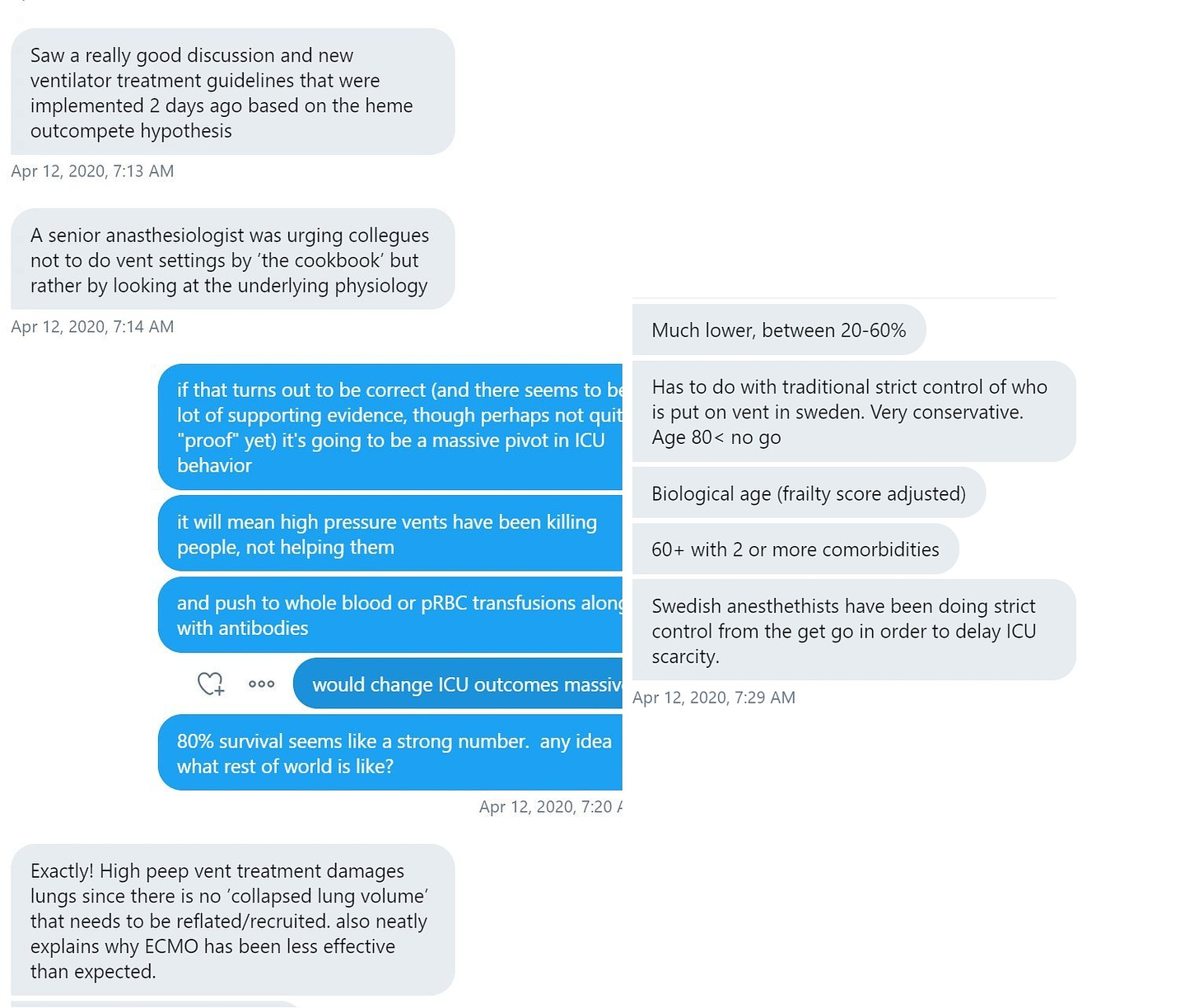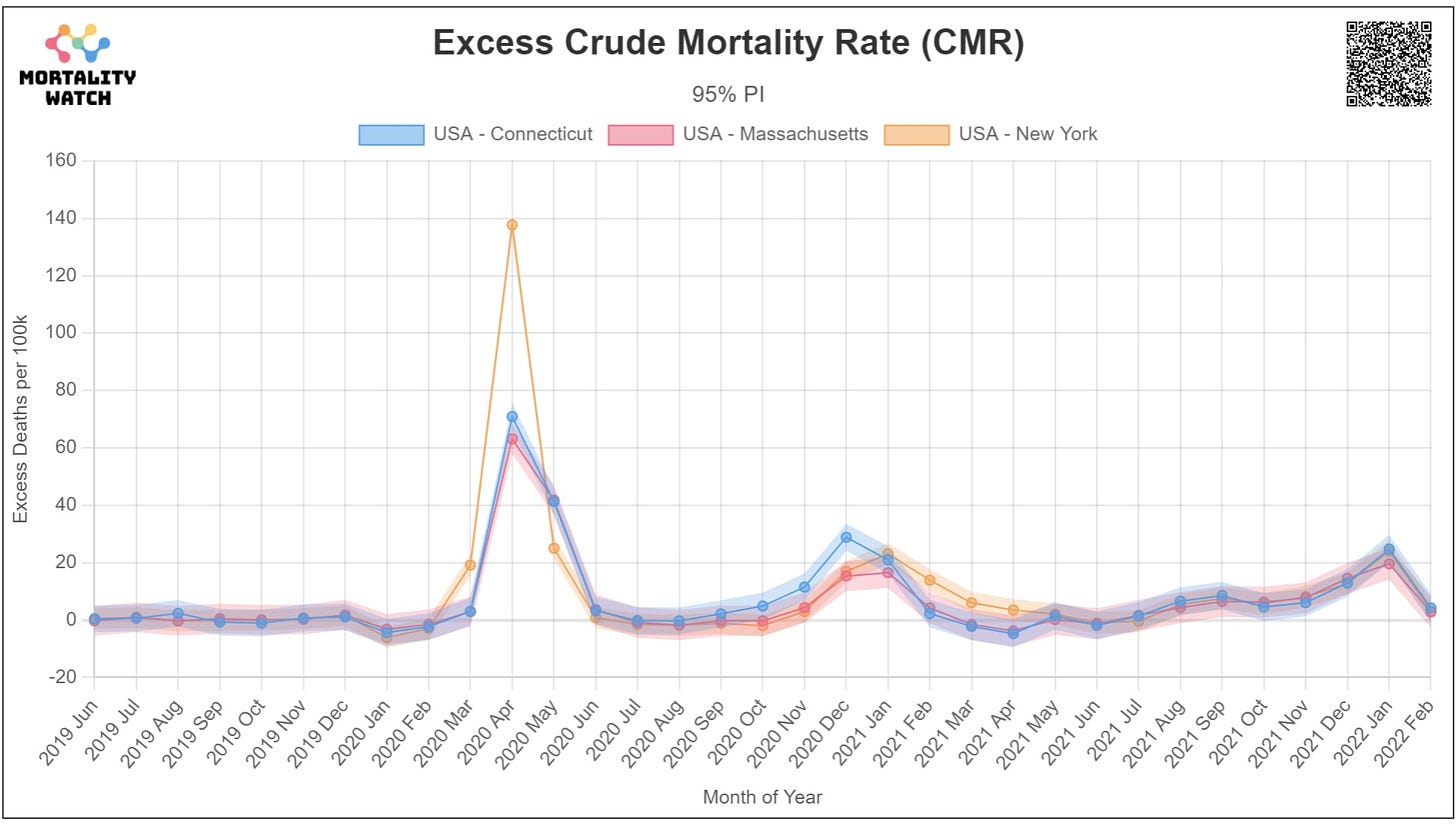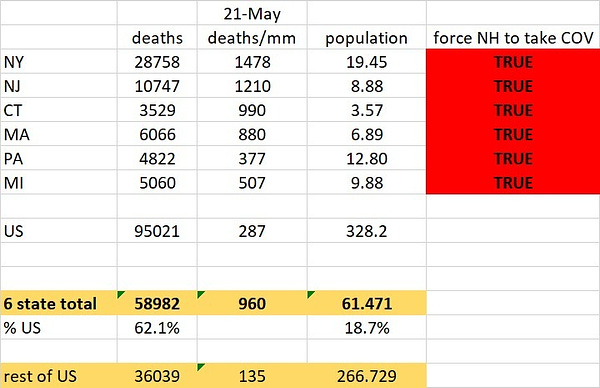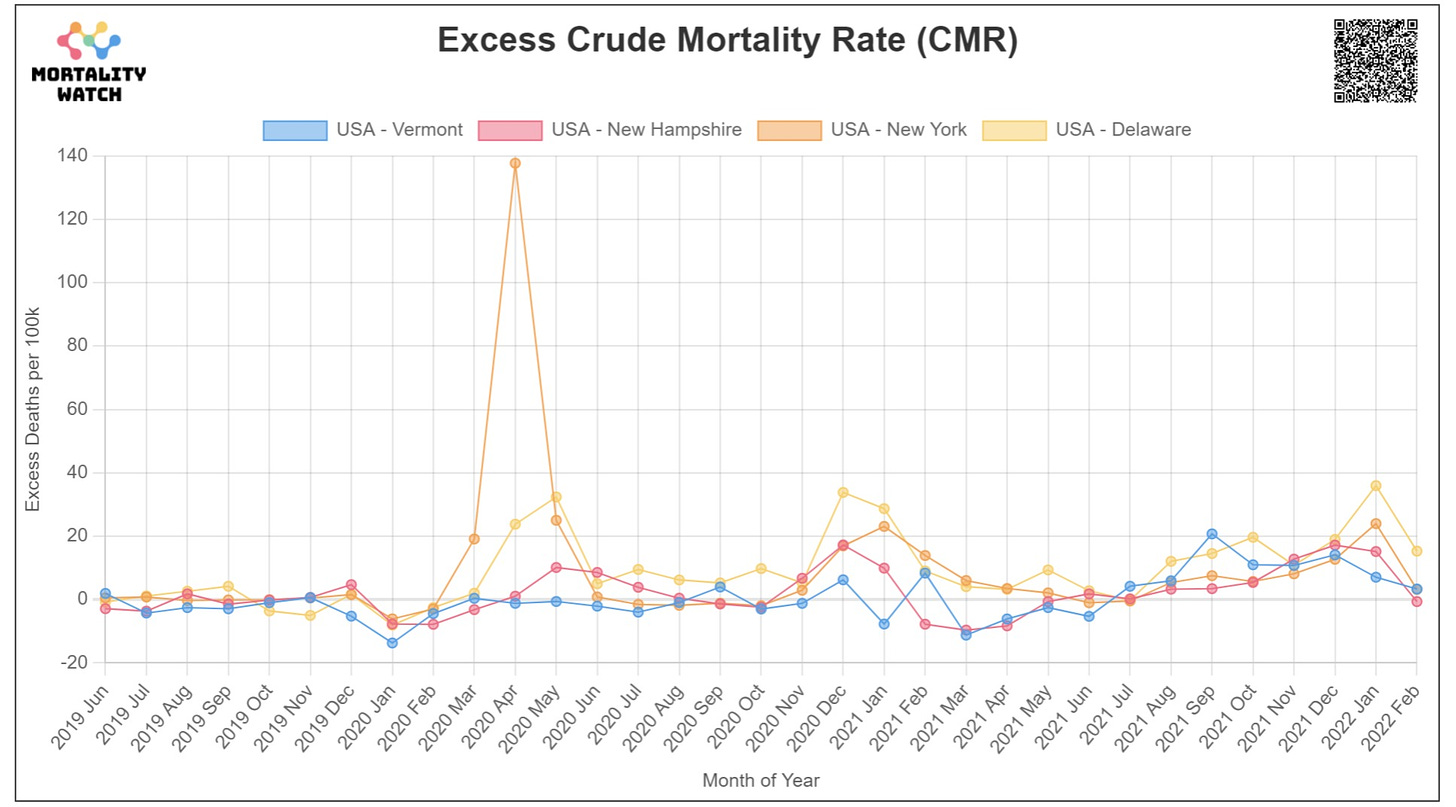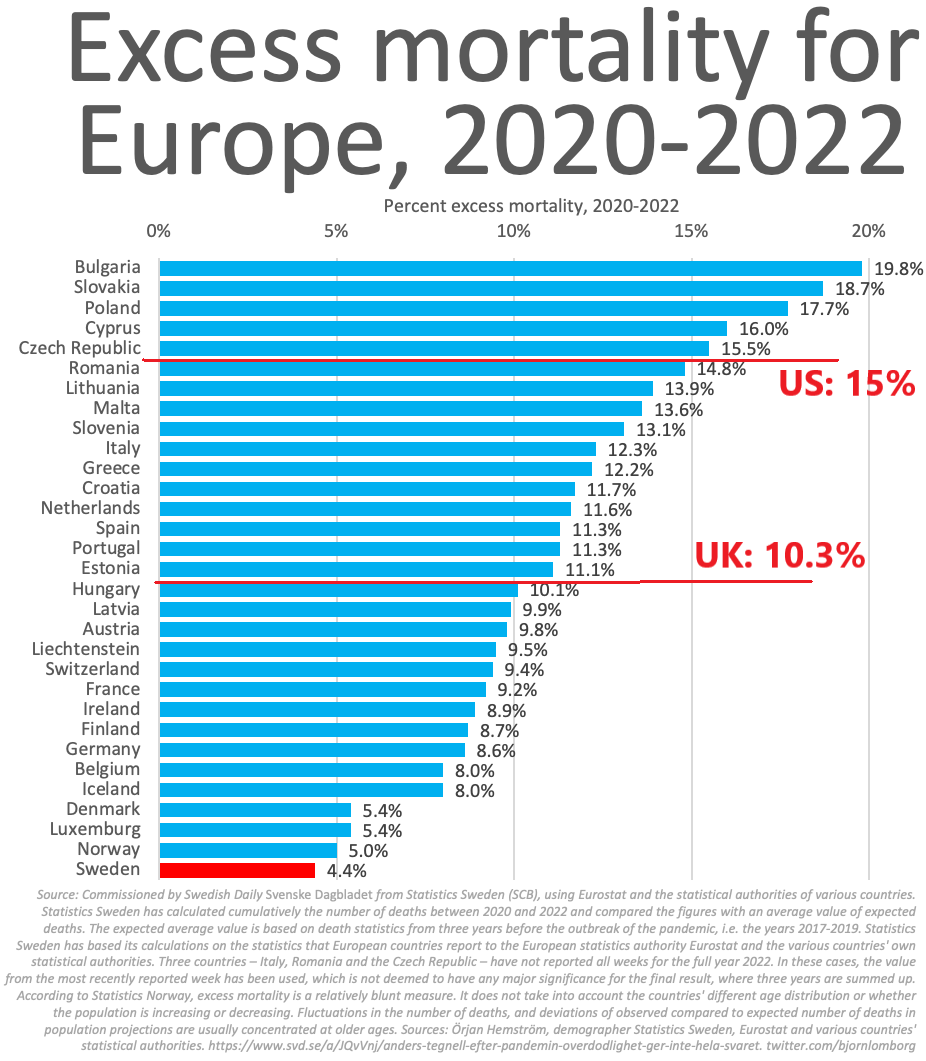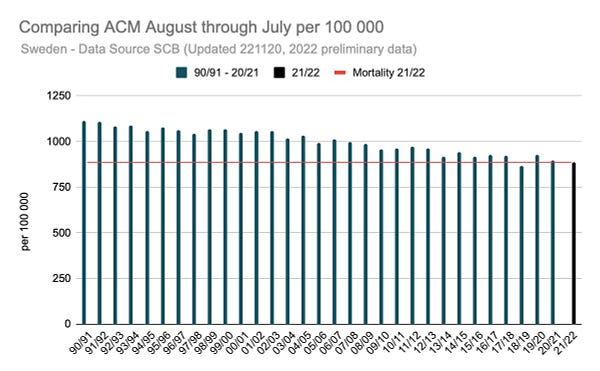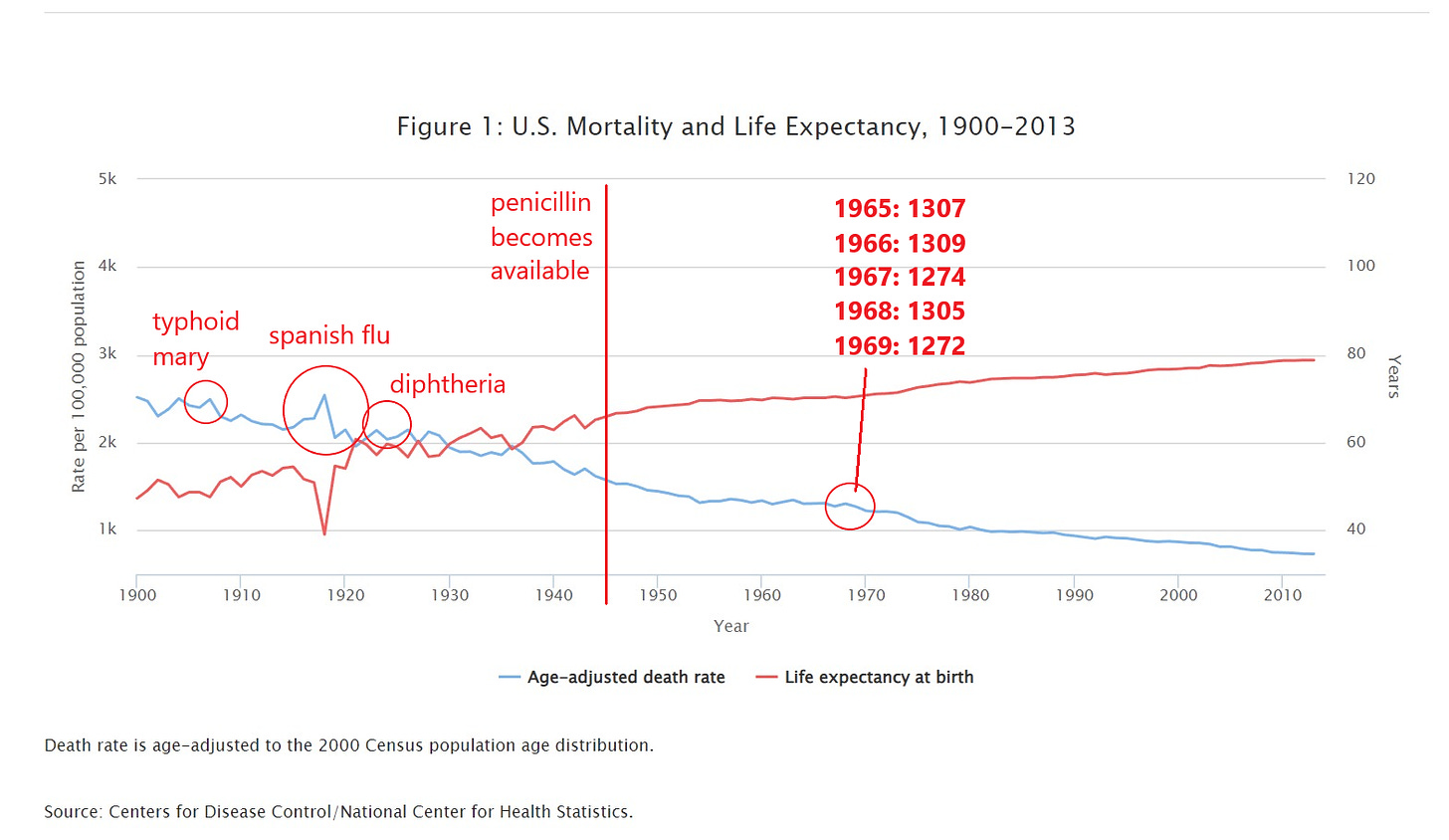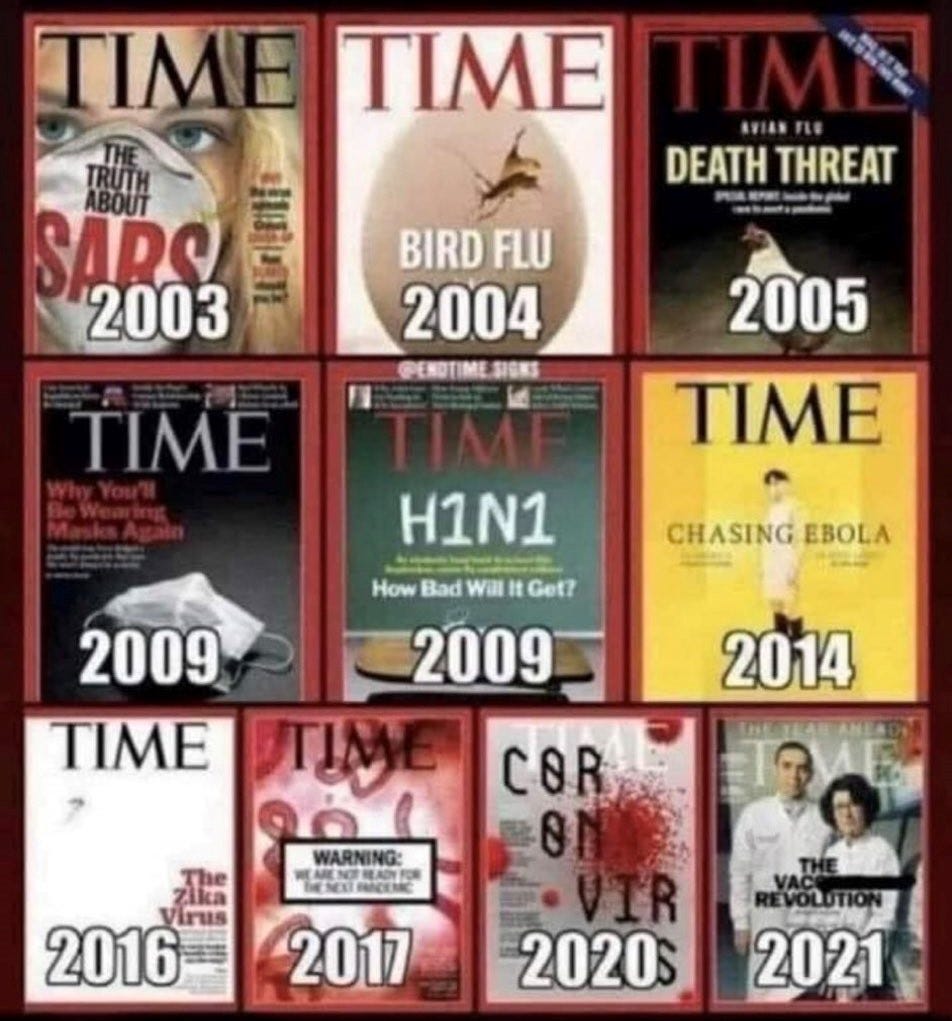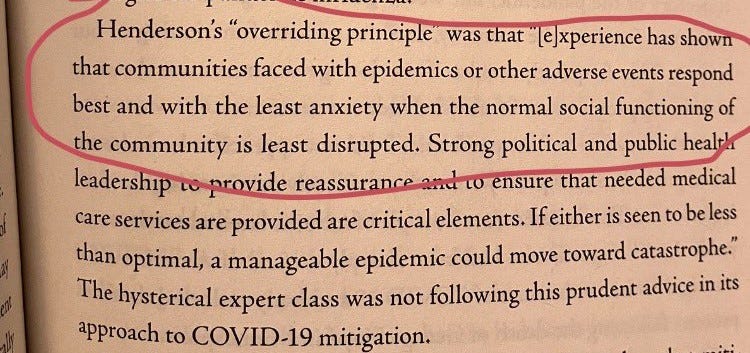scott atlas has made a list of the 10 biggest lies told by the misinformation ministries during covid.
you can read it HERE.
it’s a good list.
it covers spread, risk, mitigation, far fetched pharma fables, and all the other fabulism with which we have all become so unavoidably familiar.
and indeed, these were all lies told by people who either knew better or should have known better. every actual expert was sidelined and the social contagion of panic took center stage as the drama kids playing at being the science kids took the world on the greatest pseudoscientific joyride in human history. “story” overtook “science” and “epigram” shouted down “epidemiology.” 100 years of evidence based pandemic response programs were defenestrated and replaced with superstition driven diktat that “looked like doing something.”
and it has, predictably, fallen apart and is coming to be seen as the failure of nerve, failure of science, and failure of the asch conformity test that it was.
but that does not mean that it’s over.
what if embedded in all of this is perhaps one more lie?
the greatest lie.
the one lie to rule them all.
this is the one that will come back to haunt us over and over if we do not call it out by name and lay plain its resounding lack of basis in fact.
it’s the lie they have been trying to sell of for decades and failing (or at least having only moderate success and thus wreaking only moderate havoc).
it’s the one lie to rule them all. the one lie to rule us all. the truly big lie constituting a forest that has been lost for the trees and perversely therefore winds up being reinforced by the very debate about the little lies.
and that lie is this:
pandemics are dangerous to modern societies.
because the fact is that they are not.
beyond very minor levels, it’s been 100 years since one was. there has NEVER been a seriously dangerous global pandemic in the post antibiotic era. there have barely been any that even warranted notice and pretty much no one living can recollect a shred of the last one.
and the odds on bet appears to be that had we not swerved around covid as though it were a tyrannosaur in the road instead of a squirrel, covid would almost certainly not have been one either.
let’s unpack.
as was the case in the spanish flu, perhaps the last truly high excess death global pandemic to bedevil humanity, much of the damage was done by horrible reactions. and the parallels may be more poignant than people realize.
one of the enduring causes of fear during the 1918 flu was the way that it seemed to be killing otherwise young and healthy people (especially soldiers) in a matter of days. they would be a bit sick then suddenly die of massive organ failure and “wet hemorrhagic lungs.” the progression was incredibly fast, seemingly irreversible, and was stacking people who really ought to have been low risk in mortuaries like cordwood. this made risk, CFR, and IFR look horrifying and fear near universal.
if it could do this to a solider in his prime in a matter of days, every last one of us should be terrified.
but this is simply not a realistic outcome. in a modern society (even pre-antibiotics) it basically doesn’t happen. these are not the pre-sanitation/most people do not get enough calories days of the black death.
diseases that kill at high percentages tend not to spread because killing the host is evolutionarily maladaptive. it’s like trying to conquer the world by burning down your own house and car. even the really nasty historical killers like smallpox were only infecting ~400k people a year by the late 1800’s and excursions above 1 death/year per 1,000 population during outbreaks were very rare not in spite of, but because the fatality rate was so high.
but respiratory diseases are different and tend to spread far more. fatality rates are low. claimed spanish flu CFR was always suspicious in this regard. and there may be a reason:
there is actually quite a lot of convincing evidence that many of the “young, healthy deaths” in spanish flu were iatrogenic.
this is a word that’s going to come up a lot and a topic that’s going to be the big field of debate around covid going forward. it’s probably one of the most important scientific questions in the world right now. so let’s define it:
loosely put, iatrogenic death is when the doctor kills you. and there is a long and unpleasant history on that one from benjamin rush bleeding george washington to death to killing “witchy” cats to stop a plague carried by the fleas of the very rats they were eating to (and especially) new “wonder drugs” that are poorly understood but that rapidly go into widespread use.
and one of those drugs was aspirin.
aspirin had just come into widespread availability in 1918 (and bayer was rushing it to market for the pandemic). it was the new wowie-zowie drug and doctors (and especially militaries) all over the world fell in love with it. they prescribed it widely to those with spanish flu. in doses ranging from 8 to 31 grams per day. oopsie.
a typical aspirin today is 325mg and max dosing per day is ~4 grams.
a toxic dose is 200-300mg/kg of weight. that’s about 20g for a 180 pound person.
31g is “you’re going to die really, really fast and there is not a damn thing anyone can do to stop it once you take that dose.”
this is why incredible caution should be exercised around large departures from tested and true medical practice and new pharma modalities and products.
stop me if any of this starts to sound familiar. (study HERE)
The unprecedented overall mortality and the mortality rate among young adults during the 1918–1919 influenza pandemic are incompletely understood. Deaths in the United States peaked with a sudden spike in October 1918. Later, Wade Hampton Frost [2] studied surveys of 8 US cities and found that, for every 1000 persons aged 25–29 years, ∼30% were infected with influenza virus, and 1% died of pneumonia or influenza. This 3% case-fatality rate has been called, “perhaps the most important unsolved mystery of the pandemic” [3, p 1022]
this case fatality rate has never looked even remotely plausible for flu. you simply do not get a respiratory disease like that in a modern (or possibly any) society, especially not in young, healthy people. it’s just not a thing.
but widespread poisoning by well meaning medical professionals who have no idea how dangerous the products and procedures they are playing with is.
Official recommendations for aspirin were issued on 13 September 1918 by the US Surgeon General [64], who stated aspirin had been used in foreign countries “apparently with much success in the relief of symptoms” (p 13), on 26 September 1918 by the US Navy [29], and on 5 October 1918 by The Journal of the American Medical Association [31]. Recommendations often suggested dose regimens that predispose to toxicity as noted above. At the US Army camp with the highest mortality rate, doctors followed Osler’s treatment recommendations, which included aspirin [48], ordering 100,000 tablets [65]. Aspirin sales more than doubled between 1918 and 1920 [66].
again, anyone starting to pick up a bit of a rhyme in the history here?
the similarities to recent events are more than a little striking. (bold mine)
Autopsy reports by pathologists of the day describe extremely wet, sometimes hemorrhagic lungs in early deaths. On 23 September 1918 at Camp Devens in Massachusetts, 12,604 soldiers had influenza, and 727 had pneumonia; after examining the lungs of a dead soldier, Colonel Welch concluded, “This must be some new kind of infection or plague” [48, p 190]. What struck E. R. Le Count [49], consulting pathologist to the US Public Health Service, as most unusual was the amount of lung tissue actually “pneumonic” seemed “too little in many cases to explain death by pneumonia.” He saw a thin, watery, bloody liquid in the lung tissue, “like the lungs of the drowned,”
and as ever, bigger hammer theory tends to rise to the fore and the terrible tenet of “it’s not working so do it harder” comes into play.
consider this quote from HHS:
and this is not some “quaint delusion of doctors that wise men of modern medicine have exceeded and no longer fall prey to.”
this EXACT mindset was a massive killer in covid.
the widespread rejoinder to “covid deaths are massively overcounted using an absurdist methodology and definitions” is “oh yeah, well then explain the excess deaths!”
but it’s actually quite easy to do:
they were to a great extent iatrogenic.
it was not covid that did this killing. it was covid response and the derangement of medicine and medical and social practice.
here’s a clear and classic example from early covid: ventilators.
“vent early, vent hard” was the suddenly ascendant treatment modality. it ran riot in new york and many other parts of the world. it was used not just to treat patients but to “protect doctors” under the misbegotten theory that an intubated patient would not spread covid and that “doctors needed to be protected.”
there was a whole national campaign to build more ventilators with everything but rosie the riveter. industries (even tesla) diverted from what they were doing to make them. patients were intubated when they should not have been. when this failed to work, they kept turning up the pressure on the vents.
and this killed people wholesale.
certain internet felines were yowling about this back in april 2020.

that’s not covid death.
that’s iatrogenic death.
once the big apple figured out that vents were killing people in droves and switched to proning as others had done, this death rate dropped. but an awful lot of people had lost their lives by then. and, as in spanish flu, this high death rate was used as a pretext for more aggressive and ill considered actions that drove more iatrogenic death. it’s a vicious cycle and once it gets going, it’s self-feeding. every time you inadvertently kill people out of ignorance or fear, it makes the purported pathogen look more deadly and drives you to new “reactions” and mis-calibrations where you once more kill people. lather. rinse. repeat.
it’s not like this was unknown or unknowable.
but most countries just plain forgot and did the wrong thing despite what they knew. sometimes failing the asch conformity test is fatal to those around you.
this is a discussion i had with a swedish doctor at the time.
but once you lose your mind, start over-reacting, and act from fear or twisted interest, it takes on a life of its own.
how much less deadly would this have been had NY not undertaken such a policy?
well, maybe something like this.
i choose MA and CT because, like NY, they also undertook the incredibly harmful policy of “stuffing nursing homes with covid patients to spare hospitals” that killed so many but did not undertake the hyper aggressive ventilator practices of NY.
quantification of the nursing home issues (esp in NY) has been difficult because they are being less than forthcoming with the records, but even way back in may 2020, it was obvious that something was seriously wrong here

so might NY have looked more like this had they literally done nothing?
yes, quite possibly.
and might the US have looked more like sweden? (who incidentally had an early spike in all cause deaths because they too had awful nursing home policy but who later reacted so well they caught back up and limited effects to short term “pull forward” of the highest risk)
yes, quite possibly.
and keep in mind that these are actually a bit overstated as they are using a 2017-19 baseline for deaths and not adjusting for population growth.
and would sweden basically even have noticed that anything had happened had we not all been screaming about this?
because it sure doesn’t look that way on any but the very shortest timescales. (ACM = all cause mortality, the count of all deaths)

so where does all this excess death come from in other parts of the world?
to my mind, we really need to stop presuming that high excess death = proof of bad virus and start asking the serious questions:
how much of it was iatrogenic?
how much came from the insane policies of scaring people away from doctors and medical treatment?
how much from barring access to longstanding effective drugs and treatment in favor of new ones that mostly failed spectacularly and killed people?
how many deaths of despair were caused among the alone and isolated in care homes?
how many deaths in hospitals because patients were denied the ability to see family and perhaps more importantly because friends and family were denied the ability to be there for their loved ones to serve as advocates and organizers? (if you have ever been in hospital or been there to protect those close to you from one and make sure sound and sufficient care is supplied and applied you know what i mean on this. a hospital is no place to be alone and helpless.)
how many killed by vents, by bad nursing home policy, by putting “saving hospitals” above “saving people” and by “wonder drugs” that failed to live up to billing and whose side effects were not taken into account?
to what extent was the “covid pandemic” just a replay of spanish flu where much, probably most of the fatality rate was from bad response rather than truly bad virus?
please don’t misunderstand: i am NOT arguing that covid did not kill anyone or at least pull forward some deaths that likely would have occurred soon afterwards shortening lives by weeks and months (but not years) and thus causing spikes in deaths.
i think it did.
but did it do so to a degree in some vast excess of say, the hong kong flu of 1968? because that was among the worst if not the worst pandemic to hit the US since the second world war (and the discovery of penicillin).
and we responded to it like this:

and here’s what happened to all cause deaths in the US: (source) 1968 was the worst pre-covid pandemic since ww2.
not exactly the stuff of nightmares, was it?
and this is why literally no one, when asked what they remember about 1968, will tell you “the pandemic” despite it being the worst one in the last 75 years.
deaths in the US used to be more volatile. but since the advent of penicillin, that stopped. pre-covid, i do not think there has been a single year in US history since 1945 where the age adjusted death rate exceeded something “normal” from within the 5 years prior to “pandemic” year.
kind of like sweden DURING covid.
the asian flu in 57-8, the hong kong flu of 68, the flu of 76 (whose vaccine was such an infamous problem), h1n1 in 2009, none of these were more than a tiny ripple.
not zika, not dengue, ebola, or bird flu. none of it.
every couple years, a new one is trotted out in search of clamorous crisis. it’s basically an evergreen meme.
and it will be trotted out again.
but the history on this is not as advertised. these were all spectacular nothing-burgers. sure, sometimes we get one that’s a bit worse, but even a “bad pandemic” really does not move the needle much in the antibiotics era.
never has.
the only 2 really nasty ones in amercian history were spanish flu and SARScov-2 and both appear to have had an awful lot of their excess death toll driven by bad response rather than bad virus.
we know covid was circulating in late 2019. i’m pretty sure i had it in early dec of that year. everyone i know had a “nasty flu” with a dry upper respiratory infection around then. it took 2-3 weeks to finish going away and tested negative for flu and for pneumonia. doctors were calling it “mycoplasmic infection.”
it was a nasty bug. getting it was unpleasant. but it wasn’t killing people in unusual numbers until the panic started.
then, suddenly, it was.
again, i’m not saying it would not have led to any excess deaths had we not panicked and done all manner of poorly conceived things that led to iatrogenic deaths. it probably would have caused some. the question is “how much?” and the answer might well be “quite a lot less than people commonly suppose.” the answer might well be “so little that had we not named and obsessed over it that few would have really noticed.”
consider a thought experiment:
in a year with a baddish flu virus, what would happen if we all panicked like this?
what would happen if people were vilified, terrified, and told not to seek care?
what would happen if hospitals were emptied and care homes stuffed with sick people?
what would happen if effective drugs and health aids were proscribed and discredited while ineffective and even deadly ones put in their place?
what would happen if hospitals fired big chunks of docs and nurses and support folks for refusing to vaccinate and had to run short-staffed?
what would happen if doctors were all frightened of their patients and if all patients had to stand alone in hospitals with no friends or family in support?
what would happen if every old person in a care home was suddenly isolated, abandoned, and deprived of human contact?
what if every media outlet and arm of government did nothing but spread fear and stress?
what if every bit of normality was disrupted?
how many excess deaths would we see?
“quite a lot” i would venture.
it would likely cause one of the worst excess deaths years in peacetime american history.
it would likely be the greatest scandal in the deeply checkered annals of american public health.
and i think it’s time we consider the very real and even highly probable possibility that it just was.
because best i can tell, there have only been 2 really serious excursions in excess deaths in the US since 1900.
and both look like they were mostly iatrogenic.
there does not seem to be a single example of a “deadly pandemic” in the past 123 years that does not look to be mostly iatrogenic.
truly it would seem that there’s nothing to fear here but panic makes it so.
it’s the desire to “do something” and “appear active and on top of it” that crashes into a horrifying tendency to crisis profiteer where we suddenly lose our collective minds and run off in wild directions embracing terrible ideas and eschewing those long shown effective that does this.
and that’s how people die. needlessly.
it’s an epidemiological own-goal.
and i simply cannot see any more plausible interpretation here than “we did it in 1918 and we just did it again.”
and we really need to come to terms with the idea that “pandemic” is not he scary word it’s being made out to be.
former dean of the john’s hopkins school of medicine donald henderson had some choice ideas about this. apart from being a co-author on what was previously a sort of compendium of standing pandemic policies and assessments (published 2006) that laid out in painstaking detail how lockdowns, travel bans, school closures etc all fail and amount to superstitious panic reflexes.
he stressed the value of normalcy and allowing the systems of society to function and of bolstering not undermining faith that medical services are available and the general confidence of the public.
what a shame he died in 2016.
this is not some out there rocket science or fringe ideology. it’s “rocks are hard water is wet” level evidence based epidemiology.
and most of global society ignored it to its great peril because they became fearful and simpleminded and once this occurs, the previously known gets forgotten and common sense becomes most uncommon. nothing is obvious to scared people.
and if we would not re-live this misbegotten misadventure in the future, it is in the resistance to fear that our resiliency lies.
and this is why the exploration of just what was done, by whom, why and to what effect is so vital.
it’s why the lesson we learn is so vital.
if it is “see, THIS is how dangerous pandemics are” then this ball will soon be rolling again and once more roll right over us.
but historically, pandemics in the modern age simply are not dangerous.
unless you panic.
that’s the prior to internalize. there has not been a serious excursion in all cause deaths from one in 125 years that was not largely iatrogenic.
apart from covid, no one can even remember a post WW2 pandemic. they amounted to little because we did not panic and obsess over them.
and covid amounted to little in the countries that chose to keep their heads.
those who retained normalcy got pretty normal years.
it was those who didn’t that really got dragged.
and that sure seems to support the idea that “this was mostly because we screwed up, not because we were doomed by something unavoidably deadly.”
this is not the way.
this is:
panic does not save lives.
bravery and perspective do.
and more often than not, the best policy is “doing nothing out of the ordinary.”
there will always be hobgoblins. some of them will sneak in disguised as “models” and “experts.”
the WHO and the rest of the funhouse gang certainly seem to have designs on piles of new powers for “next time.”
the drive to ride around on a white horse shouting orders and looking like you’re saving the day is eternally endemic to the political class.
but it’s a deeply dangerous derangement to which to fall prey.
instead we need to learn that this scary word is not actually that scary.
“pandemic” is only a big deal if you make it one.
you cannot stop the spread of respiratory diseases.
but you can stop doing stupid and dangerous things in response to them
and it’s high time we did.
they are not going to stop trying to scare us.
it’s up to us to stop believing them.



